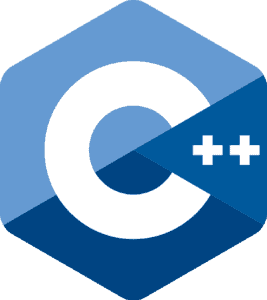When it comes to programming, several different languages can be used. Depending on what a programmer is trying to accomplish, they will use different languages to get the job done. Some of the most popular programming languages include C, C++, Java, Python, JavaScript, PHP, Rust, and Go.
In this article, we will discuss the history and features of the eight most popular programming languages and their usefulness for different tasks. We will also provide an overview of each language and discuss how and why one might select it for a particular project. Through this discussion, the reader should gain a better understanding of each language and how to select the language that best fits their needs.

History of Programming Languages
The history of programming languages dates back to the late 1950s. At this time, the first programming language, FORTRAN (formula translation), was developed. It was created to aid in scientific programming related to mathematics and engineering. Soon after, in 1959, the programming language COBOL (common business-oriented language) was created and was used primarily for business-related applications.
In 1964, BASIC (beginner’s all-purpose symbolic instruction code) was released and was widely used in the development of home computers. In the 1970s, structured programming was popularized and the programming language C was released. From there, numerous other languages were created, including C++, Java, Python, JavaScript, PHP, Rust, and Go.
Overview of Most Popular Programming Languages
The eight most popular programming languages are C, C++, Java, Python, JavaScript, PHP, Rust, and Go. C is a general-purpose, procedural language that is used for system programming and has been around since the 1970s. C++ is an object-oriented language based on C and is frequently used for developing large software applications. Java is a versatile language that is used for various application development and software development projects.
Python is a powerful language that is used for web development and scientific computing. JavaScript is a popular language used for web development that is compatible with HTML and CSS. PHP is a scripting language that is used for creating dynamic web pages. Rust is a modern language that is used for creating robust software applications. Lastly, Go is a relatively new language that is used for developing web services, cloud computing applications, and distributed applications.
1. C
Origin and History of C
The programming language C was developed in the early 1970s by Dennis Ritchie and Ken Thompson at AT&T Bell Laboratories. The language was created as a general-purpose, procedural language that would allow for system programming.
In 1972, C was re-written in a high-level assembly language and was used for software development on the UNIX platform as well as other platforms. This allowed for the development of drivers, operating systems, applications, and other utilities. C quickly became a popular language and was used to develop many popular applications such as Microsoft Office and Adobe Photoshop.

Features of C
C is a general-purpose, procedural language that can be used to develop robust applications and provides several features that make it a powerful language.
– C is a highly efficient language that allows for the fast execution of instructions.
– C allows for the use of pointers which makes it ideal for applications that require low-level access to hardware.
– C is portable and can be used to develop applications for different platforms.
– C supports the use of third-party libraries which help to reduce the amount of code required to develop an application.
– C provides developers with direct access to memory which allows for greater control when developing applications.
Usefulness of C
C is a highly efficient language that is used for a wide range of applications. It is used for system programming such as operating systems, drivers, and applications. It can be used to develop applications for the web, desktop, and mobile platforms. C is also used for developing embedded systems, such as medical and automotive systems.
Since C is a low-level language, it is also used for programming hardware. Additionally, C is often used as an intermediate language for the development of other languages, such as C++. All of this makes C a very powerful and flexible language that can be used for almost any programming task.
2. C++
Origin and History of C++
C++ is an object-oriented language that is based on the language C. It was developed in the early 1980s by Norwegian computer scientist Bjarne Stroustrup. His goal was to create an improved version of C that would be easier to use for software development but still provide the power of the original language.
Stroustrup added features to C for more programmer control, such as classes, inheritance, and operator overloading. These features and others make C++ a powerful language that can be used for a wide variety of applications.

Features of C++
C++ is an object-oriented language that allows for better control over the development process. It provides numerous features that make it a powerful language.
– C++ supports the use of classes and objects which aid in code organization.
– It provides type safety which helps to ensure code safety and reduces the risk of coding errors.
– C++ is a type-safe language that allows developers to use the same variable without having to declare it each time.
– Inheritance and polymorphism make code easier to read and maintain.
– C++ allows for creating templates that reduce the amount of code required to develop an application.
Usefulness of C++
C++ is a powerful language that is used for a variety of software development tasks. It is often used for developing large applications such as games, graphical user interfaces, and software for embedded systems. Additionally, C++ is often used for developing applications for web and mobile platforms.
C++ is also used by many companies due to its scalability and flexibility. Moreover, C++ provides developers with a wide range of features for developing efficient code. Developers can also use third-party libraries which help to reduce the amount of code required for certain tasks. All of this demonstrates the usefulness of C++ for various software development tasks.
3. Java
Origin and History of Java
The programming language Java was developed in the mid-1990s by Sun Microsystems. It was created as a versatile language that could be used for various application development and software development tasks.
Java was designed to be platform-independent and thus can be used to develop applications for different platforms. Moreover, Java provided developers with a garbage-collecting feature that allowed for efficient use of memory. These features and others made Java a popular language with developers.
Features of Java
Java is a powerful language that provides numerous features that make it useful for a variety of tasks.
– Java is a platform-independent language that allows for the development of applications for different platforms.
– It has dynamic memory management which helps to reduce the amount of memory used.
– Java is an object-oriented language that allows for better code organization and code reuse.
– Java is a type-safe language that helps to reduce the risk of coding errors.
– It is compatible with HTML and XML which makes it useful for web development.
Usefulness of Java
Java is a highly versatile language that is used for a variety of different tasks. It is used for developing native desktop applications, mobile applications, and web applications. Java is also used for developing enterprise applications such as servers, databases, and distributed systems. Additionally, Java is used for the development of embedded systems and for developing scripts for Big Data and Machine Learning applications.
Java is a highly secure language that is also used for cloud computing applications. With its wide range of features, Java is a powerful language that can be used for almost any type of software development task.
4. Python
Origin and History of Python
Python is a powerful language that was developed in the late 1980s by Dutch computer scientist Guido van Rossum. He created the language as a general-purpose, interpreted language that would be easy to use and have a wide range of applications.
Since its inception, Python has become a popular language that is used for web development, data analysis, artificial intelligence, and scientific computing. It is also used in the development of games, and numerous other applications.
Features of Python
Python is a powerful language that provides numerous features that make it useful for various tasks.
– Python is an interpreted language that helps to reduce the amount of code needed for an application.
– It supports dynamic typing which helps to reduce coding errors.
– Python is an object-oriented language that allows for better code organization and code reuse.
– It provides extensive support for third-party libraries which helps to reduce the amount of code required to develop an application.
– It is platform-independent, allowing it to be used for developing applications for different platforms.
Usefulness of Python
Python is a powerful language that is used for a wide range of applications. It is often used for web development with frameworks such as Django and Flask. It is also used for artificial intelligence and machine learning applications with the help of libraries such as Scikit-Learn.
Python is an incredibly versatile language and is used for numerous other tasks. It is used for data analysis, scientific computing, computer vision, and game development. Additionally, Python can be used as a scripting language or as a “glue” language to combine different programming languages. All of this makes Python an extremely powerful and flexible language.
5. JavaScript
Origin and History of JavaScript
JavaScript is a popular language that was developed in the mid-1990s by Brendan Eich. It was designed as a scripting language for web development and could be used to create dynamic web pages.
Since its inception, JavaScript has become a popular language for web development and is the most commonly used language on the web. It is also used for creating desktop and mobile applications, game development, and a variety of other tasks.

Features of JavaScript
JavaScript is a powerful language that provides numerous features to make it useful for web development and other tasks.
– JavaScript is an interpreted language that makes it easy to use.
– It is platform-independent, allowing it to be used for developing applications for different platforms.
– JavaScript is compatible with HTML and CSS which makes it useful for web development.
– It provides extensive support for third-party libraries which helps to reduce the amount of code required.
– JavaScript supports the use of object-oriented programming which allows for better code organization.
Usefulness of JavaScript
JavaScript is a powerful language that is used for web development and other tasks. It is used for developing dynamic webpages, creating desktop and mobile applications, and game development.
JavaScript is also used for developing cloud applications and for machine learning applications. Additionally, JavaScript is often used as a scripting language for other programming languages such as Python and C++. All of this demonstrates the usefulness of JavaScript for various tasks.
6. PHP
Origin and History of PHP
PHP is a scripting language that was developed in the late 1990s by Rasmus Lerdorf. It was created as a server-side language for web development and could be used to create dynamic web pages.
Since its inception, PHP has become a popular language for web development and is used by many websites today. It is also used for creating content management systems, third-party applications, and numerous other applications.
Features of PHP
PHP is a powerful language that provides numerous features to make it useful for web development and other tasks.
– PHP is an interpreted language that makes it easy to use.
– It is platform-independent, allowing it to be used for developing applications for different platforms.
– PHP is compatible with HTML and CSS which makes it useful for web development.
– It provides extensive support for third-party libraries which helps to reduce the amount of code required.
– PHP supports the use of object-oriented programming which allows for better code organization and code reuse.
Usefulness of PHP
PHP is a powerful language that is used for web development and other tasks. It is used for developing dynamic webpages, creating content management systems, and developing third-party applications.
PHP is also used for developing e-commerce websites, cloud applications, and machine learning applications. Additionally, PHP can be used as a scripting language for other programming languages such as Python and C++. All of this demonstrates the usefulness of PHP for various tasks.
7. Rust
Origin and History of Rust
Rust is a modern language that was developed in the early 2010s by Mozilla. It was designed as a language for creating robust software applications and provides developers with safety, simplicity, and speed.
Since its inception, Rust has become a popular language for application development and is used by numerous companies today. It is also used for creating game engines, compilers, and operating systems.
Features of Rust
Rust is a powerful language that provides numerous features to make it useful for software development.
– Rust provides low-level access to memory which allows for greater control when developing applications.
– It is a type-safe language that helps to reduce the risk of coding errors.
– Rust supports the use of macros which helps to reduce the amount of code needed.
– It has a powerful type system that helps to ensure code safety.
– Rust has a garbage-collecting feature which helps to reduce the amount of memory used.
Usefulness of Rust
Rust is a powerful language that is used for software development. It is used for developing graphical user interfaces, operating systems, embedded systems, and game engines.
Rust is also used for developing web services and distributed applications. Additionally, Rust is used for developing command-line tools, compilers, and network services. All of this demonstrates the usefulness of Rust for software development.
8. Go
Origin and History of Go
Go is a relatively new language that was first developed in 2009 by Google. It was created as a language for developing services and distributed applications.
Since its inception, Go has become a popular language for web services and cloud computing applications. It is also used for developing command-line tools, machine-learning applications, and other applications.

Features of Go
Go is a powerful language that provides numerous features to make it useful for a variety of tasks.
– Go provides memory safety which helps to ensure code safety.
– It is an interpreted language that makes it easy to use.
– Go is a modern language that supports concurrency and garbage collection.
– It provides extensive support for third-party libraries which helps to reduce the amount of code required.
– Go is a type-safe language that helps to reduce the risk of coding errors.
Usefulness of Go
Go is a powerful language that is used for a wide range of applications. It is used for developing web services, cloud computing applications, and distributed applications.
Go is also used for developing command-line tools, machine-learning applications, and for developing embedded systems. Additionally, Go can be used as a scripting language for other programming languages such as C++ and Java. All of this demonstrates the usefulness of Go for various tasks.
Conclusion
This article provided an overview of the eight most popular programming languages: C, C++, Java, Python, JavaScript, PHP, Rust, and Go. We discussed the history, features, and usefulness of each language. Through this discussion, the reader should gain a better understanding of each language and how to select the language that best fits their needs. With so many languages to choose from, it is important to have thorough knowledge to select the right language for any project.